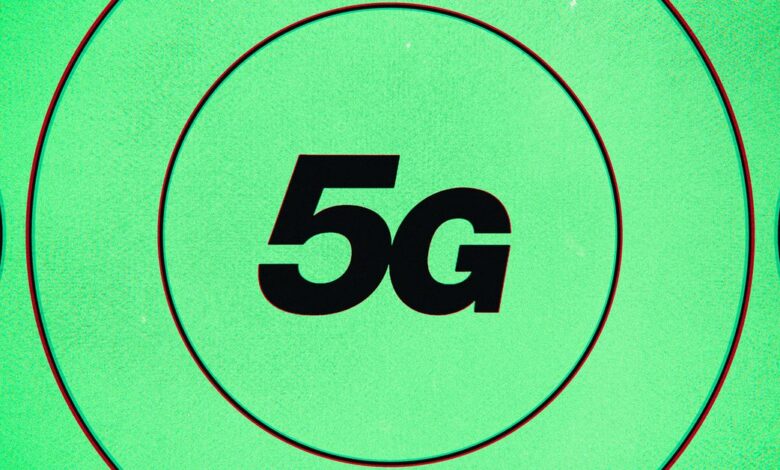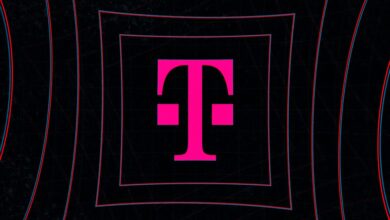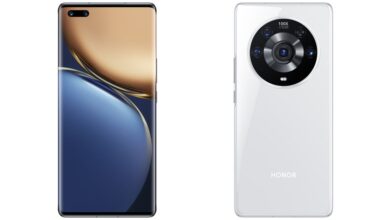What is 5G, and why is it kind of bad right now?

[ad_1]
After an introduction from Consumer Technology Association president Gary Shapiro, Verizon CEO Hans Vestberg takes the stage. He wears a simple black T-shirt with an unmistakable red check and begins delivering his keynote speech. The topic at hand is 5G, something Vestberg speaks about enthusiastically. The keynote covers the eight “currencies” of 5G, features a professional athlete, and highlights how 5G will transform the drone industry.
That was CES 2019. It was also CES 2021. Verizon hasn’t been alone in fueling the 5G hype machine; AT&T and T-Mobile have been talking up their 5G networks for years. Now, it’s showtime. With major flagship phones and a lot more budget devices supporting it, this is the year when a critical mass of phone buyers will finally see for themselves what all this talk is about.
Here’s the bad news: if they’ve been listening to the hype, they’re going to be disappointed. We’ve been promised a fourth industrial revolution with fantastical things like remote surgery and driverless cars. Instead, what we have now is widespread 5G that’s more or less the same speed as (or even slower than) 4G and super-fast mmWave 5G in some parts of some major cities with highly limited range. So where is this 5G future we’ve been promised? The truth is that it’s coming along, but it will materialize more slowly and in less obvious ways than what we’ve been led to believe.
Spectrum wars
To understand the complicated 5G situation in the US right now, you first need to know that there are low-, mid-, and high-band frequencies that carriers can use. Low-band is slower but offers widespread coverage. High-band, often called mmWave, is very fast but extremely limited in range. Mid-band sits in a sweet spot between the two, with good range and better-than-LTE speeds.
If you were building a 5G network from scratch, you’d probably want a bunch of mid-band spectrum, right? The trouble is, spectrum is a limited resource. Sascha Segan, lead mobile analyst at PCMag and a wealth of 5G knowledge, sums up part of the spectrum problem.
“Our government did not make the right channels available to the carriers,” he says. “Verizon and AT&T have basically just been using leftover odds and ends of their 4G spectrum… putting the 5G encoding on these leftover bits and bobs so they can pop a 5G icon on the screen. And the performance is meaningless.”
The technology Verizon and AT&T are using to get nationwide 5G coverage is called Dynamic Spectrum Sharing (DSS), which allows 4G and 5G to coexist on the same spectrum. That helps carriers make the transition from one technology to the other, but it comes at a cost. Michael Thelander, president and founder of wireless industry research firm Signals Research Group, sums it up this way: “It’s kind of like having that super fast sports car and you’re stuck on the Santa Monica freeway. You can’t experience the full capabilities.”
T-Mobile, on the other hand, doesn’t need to rely on spectrum sharing as much as the other two, thanks to its acquisition of Sprint and its mid-band spectrum. That has given it an edge in its 5G offerings thus far.
By early 2022, though, we will likely see Verizon and AT&T catching up. A swath of mid-band spectrum known as C-band went up for auction in late 2020. And while we don’t know which companies won which blocks of spectrum, we know those two carriers, in particular, spent big; bidding topped out at over $80 billion.
What happens next?
The networks might not be firing on all cylinders yet, but more and more mobile devices are ready for them. In fact, by the end of the year, it may be harder to find a non-5G phone than one that supports the technology. Not only do Apple and Samsung’s flagship phones support 5G across their lineups, but it’s also making its way into more midrange and budget devices, thanks to new 5G-ready low-end processors like the Qualcomm Snapdragon 480.
More people than ever will buy a 5G phone this year — likely not because they really wanted 5G, but because the phone they were going to get anyway supports it. The good news is that there really isn’t a downside to buying a 5G phone now if it’s time to upgrade. The “5G tax” that put a higher price tag on 5G phones over the past couple of years seems to be disappearing, and we haven’t noticed any other drawbacks like excessive battery drain in our testing.
:no_upscale()/cdn.vox-cdn.com/uploads/chorus_asset/file/21973509/vpavic_4243_20201017_0144.0.jpg)
So what’s the reaction like so far from, say, someone who bought an iPhone 12 — not for 5G, but because it’s the new iPhone? “They’re frustrated and angry,” says Segan. “With both Verizon and AT&T, because of what I’ll call technical difficulties, their nationwide 5G is often slower than their 4G. So people are getting these iPhones and they’re finding that frequently they have worse performance than they had before 5G.” The “technical difficulties” he refers to include DSS in Verizon’s case and the limitations of the narrow 5MHz band that AT&T often uses for its 5G.
That’s not great. But a couple of factors will make a difference over the next year. First, that C-band spectrum will start coming online around the end of the year. If you’re one of the frustrated owners of an iPhone 12 or Galaxy S21, there’s good news: your phone is already approved to use C-band, so if you’re on Verizon or AT&T, you should see speed improvements when that happens.
Not all 5G phones support C-band, though. Those that don’t will need a software update to use it, and there’s no guarantee that your phone’s manufacturer will offer one. Inexpensive 5G models, in particular, may not see a C-band update, even if they have the hardware to support it. Phone makers need to apply for Federal Communications Commission approval to enable it and may be less likely to bother with the cost of this step for phones with a shorter lifespan.
The other factor is something that will likely happen sooner than C-band becoming available: large gatherings. That’s when Segan thinks Verizon’s Ultra Wideband could really shine. “When we’re all vaccinated, I think people are going to be desperate… for all of these dense, crowded, communal experiences that we will have been missing for a year and a half. And so Verizon should be working on applications and experiences right now like the thing they did at the Super Bowl, or what they’ve talked about doing at Disney World, that you can only do on Ultra Wideband.”
Again, that will depend on your 5G phone supporting the right kind of 5G — not every 5G phone supports mmWave. The aforementioned iPhone and Samsung flagships do, and other Verizon models that support are denoted as “UW.”
Where are our jetpacks?
And what about the stuff of CES keynotes like remote surgery and self-driving cars? That’s on the way, too, but it’ll take longer. Thelander explains: “The first focus of 5G was really a feature called ‘enhanced mobile broadband’ and that’s just getting fast data speeds to the consumer on their smartphone. Things like factory automation and the functionality behind that, that was really developed afterwards, so it lags, from a standardization perspective.”
:no_upscale()/cdn.vox-cdn.com/uploads/chorus_asset/file/21990050/cfaulkner_201023_4258_0009.0.jpg)
Getting the technology piece sorted out is only half of the equation. “Once you’ve got a certain feature or functionality defined in a standard, now a vendor has to go out and build that functionality, then you have to test it, and then you have to have the industry adopt it,” Thelander says. “The technology may be there, the standard may be there, it may work fine, but it has to be implemented and rolled out. And you have to have the business case for it. How do you make money off of it? All those types of things… it just takes time.”
Despite networks constantly waving their “5G Mission Accomplished” banners in TV commercials over the past year, 5G is very much still a work in progress. It’s going to get better, but how soon that happens for you depends on a lot of factors: which phone you have and what bands it supports, which network you’re on, where you are, and what you’re doing. It seems clear now that there never really was a “Race to 5G” — just technological progress as usual, which is often slow, confusing, and uneven. That’s a little bit harder to sell in a keynote or a commercial.
[ad_2]
Source link






